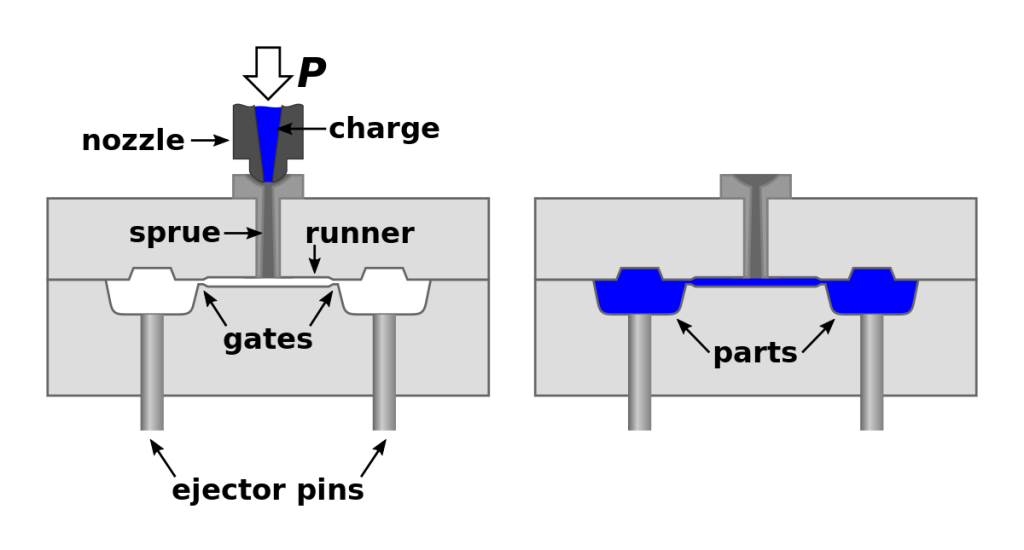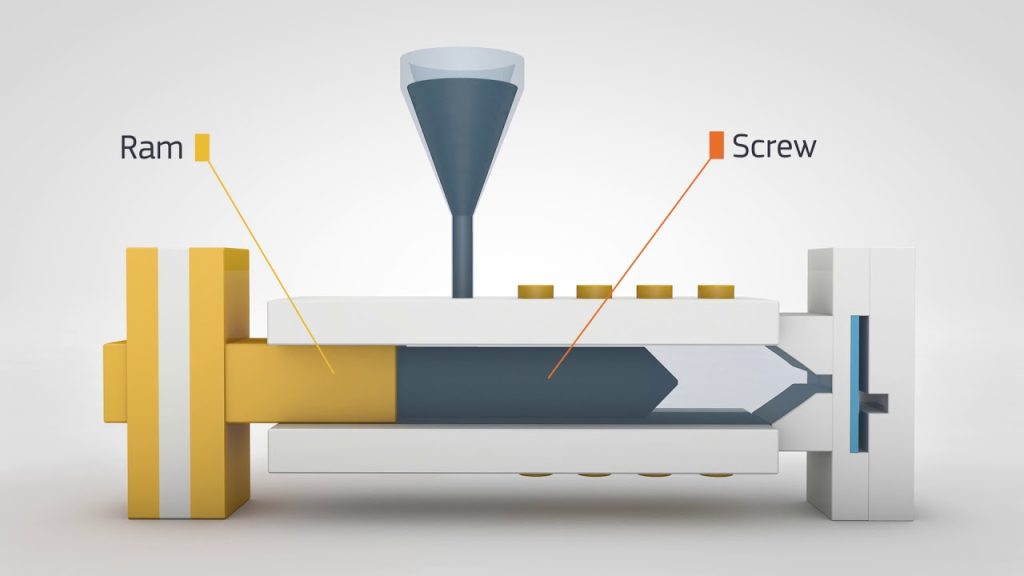Table of Contents
Injection molding is a widely used manufacturing process that involves injecting melted plastic into a mold to create a product. While it’s a popular method for producing plastic parts, many wonder about the cost of injection molding.
The cost of injection molding depends on several factors, including the complexity of the part, the materials used, and the quantity produced. In this article, we’ll explore these factors in more detail to give you a better understanding of how expensive injection molding can be.
How Expensive is Injection Molding?
If you’re in the manufacturing industry, you’ve probably heard of injection molding. Injection molding is a manufacturing process used to create objects by injecting molten material into a mold. The material cools and hardens, creating a solid object. But how expensive is injection molding? Let’s take a closer look.
Factors that Affect Injection Molding Costs
There are several factors that can affect the cost of injection molding. These include:
Material Costs: The type of material used can greatly affect the cost of injection molding. Some materials, like polypropylene, are cheaper than others, like polycarbonate.
Design Complexity: A more complex design will require a more complex mold, which can increase the cost of injection molding.
Tooling Costs: The cost of the mold itself can be expensive, especially if the mold needs to be custom-made.
Production Volume: The volume of production can also affect the cost of injection molding. Larger volumes can result in lower costs per unit, while smaller volumes can result in higher costs per unit.
In addition to these factors, there may be other costs associated with injection molding, such as shipping and handling fees.
Benefits of Injection Molding
Despite the potential costs associated with injection molding, there are many benefits to using this manufacturing process. These include:
Efficiency: Injection molding is a highly efficient process that can produce large quantities of objects quickly and consistently.
Accuracy: Injection molding is a precise process that can produce objects with high levels of accuracy and consistency.
Flexibility: Injection molding can be used to create objects of various sizes, shapes, and materials.
Cost-Effective: While there may be initial costs associated with injection molding, the efficiency and accuracy of the process can result in lower costs over time.
Injection Molding vs. Other Manufacturing Processes
There are several other manufacturing processes that can be used to create objects, including:
3D Printing: 3D printing is a process that involves creating an object layer by layer using a 3D printer. While 3D printing can be useful for creating small quantities of objects, it is not as efficient or cost-effective as injection molding for larger quantities.
CNC Machining: CNC machining is a process that involves cutting material to create an object. While CNC machining can be useful for creating prototypes, it is not as efficient or cost-effective as injection molding for larger quantities.
Digital Printing: Digital printing is a process that involves printing an image or design onto a surface. While digital printing can be useful for creating custom designs, it is not as efficient or cost-effective as injection molding for creating solid objects.
In conclusion, injection molding can be a highly efficient and cost-effective manufacturing process for creating objects in large quantities. While there may be initial costs associated with the process, the benefits of injection molding make it a popular choice in many industries.
Frequently Asked Questions
Here are some frequently asked questions about injection molding cost:
What is injection molding?
Injection molding is a manufacturing process used to produce large quantities of identical parts. Molten material is injected into a mold cavity, where it cools and solidifies into the desired shape. Injection molding is used to produce a wide range of products, from small toys to large automotive parts.
How expensive is injection molding?
The cost of injection molding depends on a variety of factors, including the size and complexity of the part, the material used, and the volume of parts produced. Generally, injection molding is more expensive than other manufacturing processes for small volumes of parts, but becomes more cost-effective for larger volumes.
The upfront costs of injection molding can also be high, as a mold must be designed and fabricated before production can begin. However, the cost per part decreases as the volume of parts produced increases, making injection molding a good option for high-volume production.
What factors affect the cost of injection molding?
Several factors can affect the cost of injection molding, including:
– Part size and complexity
– Material selection
– Number of cavities in the mold
– Tooling and mold design
– Production volume
Each of these factors can impact the cost of injection molding in different ways. For example, a more complex part will require a more intricate mold design, which can increase the cost of tooling. Similarly, using a more expensive material will increase the cost of each part produced.
What are the advantages of injection molding?
Injection molding offers several advantages over other manufacturing processes, including:
– High production volumes
– Consistent part quality
– Ability to produce complex parts with tight tolerances
– Wide range of materials available
– Low labor costs
These advantages make injection molding a popular choice for producing large quantities of identical parts, such as those used in the automotive and electronics industries.
What are some alternatives to injection molding?
There are several alternative manufacturing processes that can be used instead of injection molding, including:
– Blow molding
– Thermoforming
– Rotational molding
– Extrusion
Each of these processes has its own advantages and disadvantages, and the best option will depend on the specific needs of the project. For example, blow molding is often used to produce hollow parts, while thermoforming is a good option for large, thin-walled parts.
In conclusion, injection molding can be an expensive process, but it is important to consider the benefits it offers. The cost of injection molding depends on several factors, including the complexity of the product, the size of the production run, and the materials used. However, injection molding can produce high-quality, consistent parts with minimal waste and a short turnaround time.
Despite the initial investment required for injection molding, the long-term benefits make it a worthwhile option for many businesses. By producing parts with high precision and low waste, injection molding can lead to significant cost savings over time. Additionally, the ability to produce large quantities of parts quickly and consistently can help businesses meet demand and improve efficiency.
Overall, while injection molding can be expensive, it is an investment that can pay off in the long run. By carefully considering the factors that impact the cost of injection molding and the benefits it offers, businesses can make informed decisions about whether it is the right manufacturing process for their needs.
Request a quote today!
[contact-form-7 id="1578" title="Contact form"]
Please compress the file into a ZIP or RAR file before uploading. Alternatively, send through your RFQ by email.
enquires@unitymanufacture.com





